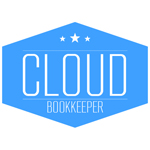The SEISS claims portal reopens on Monday 30 November, but taxpayers must declare their trade has been impacted by reduced demand before they claim the third grant.
When claiming the first two self-employed income support (SEISS) grants taxpayers had to confirm that their trade had been adversely affected by the coronavirus pandemic, which was a difficult concept to pin down. For the SEISS.3 this condition has been replaced with a more precise “impact on demand” test.
Where they qualify for the SEISS.3 grant the taxpayer will receive one lump sum payment to cover the three-month period: 1 November 2020 to 31 January 2021. It will be paid at 80% of the taxpayer’s average trading profits for 2016/17 to 2018/19, as calculated for the SEISS.1 grant.
The maximum SEISS.3 grant payable is £7,500, or £2,500 per month, which is also the same cap as applied for the SEISS.1 grant.
Declarations
The HMRC guidance on checking whether the taxpayer can claim the SEISS.3 grant confirms the individual must be:
- currently trading and be “impacted by reduced demand”; or
- has been trading but the business is temporarily closed due to coronavirus.
The trader must also confirm they are:
- intending to continue to trade; and
- they reasonably believe that the impact on their business will cause a significant reduction in their trading profits due to reduced business activity, capacity or demand, or inability to trade due to coronavirus during the period 1 November 2020 to 31 January 2021.
Emphasis on sales not costs
The previous “adversely affected” test was met if the business turnover had decreased, or alternatively if business costs had increased, due to the pandemic. There was no minimum threshold for the adverse effect, so even a small increase in costs or drop in sales meant the business would qualify.
The reduced demand test is set out in a new HMRC Direction for SEISS.3 at para 4.2. It requires the trader to suffer a significant reduction in trading profits for the relevant basis period (see below). “Significant” is not defined, so it must take its normal English definition as having a great effect, or something that affected a situation to a noticeable degree.
The HMRC examples make it clear that an increase in costs alone, resulting in a drop in profits, will not allow the trader to qualify for the grant.
The reduction in sales can be due to a number of factors, but it must also lead to a reduction in profits. If the volume of sales has decreased but the value of each sale has increased so profits are constant, the business does not qualify.
However, if the reduced sales activity is solely due to the business owner having to self-isolate because they, or someone they care for, has travelled into the UK, that business doesn’t qualify for the SEISS.3 grant. Self-isolation due to Covid-19 symptoms, testing or on instruction due to medical vulnerability is accepted as a cause of reduced sales.
Relevant basis period
The new HMRC Direction (legislation for SEISS.3) makes it clear that the significant reduction in trading profits must be measured over the current accounting period as a whole, and that is the period that includes November 2020 to January 2021.
Where the accounting period ends on 31 March or 5 April 2021, it will align to the 2020/21 tax year and be reported on the 2020/21 tax return submitted by 31 January 2022. But many sole traders work to different year end, such as 30 April 2021. This “current period” will be taxed in 2021/22, and reported on the SA return submitted by 31 January 2023.
Other conditions
The other conditions for the SEISS.3 grant are the same conditions as applied for the first two SEISS grants.
The taxpayers who were excluded from those grants are still excluded from the SEISS.3, and this will include those who:
- started their business after 5 April 2019,
- submitted their 2018/19 tax return after 23 April 2020
- had self-employed profits of less than half their average annual income
- had average annual profits for 2016/17 to 2018/19 in excess of £50,000.
How accountants can help
The SEISS grant must be claimed by the individual taxpayer, online through the HMRC portal, by 29 January 2021. Tax agents should not attempt to make the SEISS claim by using their client’s Government Gateway ID and password, as this will trigger a fraud flag.
However, before claiming the taxpayer made need help in forecasting their turnover for the full accounting period that includes the period November 2020 to January 2021.









